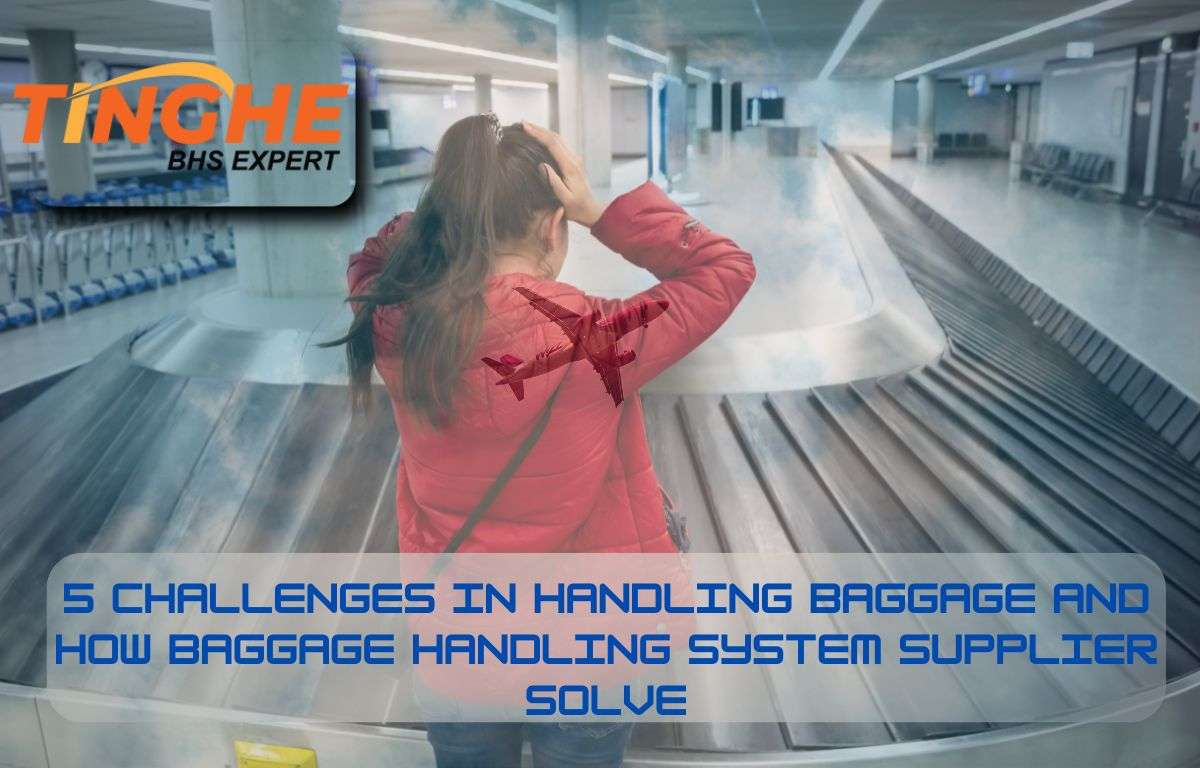
Airports worldwide are getting busier each year. With more people being carried on air, there is a need to manage more bags daily. This makes baggage handling critical to airport operations. A competent baggage handling system supplier ensures passengers' bags are transferred fluently from check-in to the plane to baggage claim.
However, sometimes, baggage handling is not enough of a torture. Airport workers face several challenges every day. Every issue can influence the customer's satisfaction and the airline's performance regarding lost luggage, delayed delivery, or any other problem. The positive news is that advanced baggage handling systems are made to rectify such matters through smart technology.
Let’s examine the five most frequent baggage handling issues and how advanced systems can address them.
Nothing is as frustrating to a traveler as arriving at their destination and not finding their bag. Lost luggage can spoil a trip, spoil an airline’s face, and even cost money to rectify.
Modern systems utilize barcode and RFID (Radio Frequency Identification) tags to track every bag from the beginning until the end. These tags contain details about the passenger and their destination alongside the flight. As a bag moves through the airport, it is carried through various automated tag readers who read the tags instantly, even if the tag is obscured or the bag is moving fast.
With advanced tracking software, airline staff receive real-time updates. Some airlines let passengers track their bags using mobile apps. This high level of visibility keeps bags always in the right spot and enables them to fix routing errors on time.
Sometimes luggage is found at the airport on time, though it takes ages to reach the carousel. Passengers wait in agony, especially after long flights.
Modern baggage handling systems exploit automatic conveyors and sorting machines, which convey bags quickly around the airport. These systems are programmed to process bags from recently landed flights first, so passengers get them quickly. Systems can also automatically adjust during peak hours, maintaining a smooth flow of even thousands of bags moving simultaneously.
Another significant issue is damaged luggage. Travelers commonly complain of torn handles, cracked wheels, or crushed bags.
Newer systems are designed with handling and care in mind. Conveyors are constructed with smooth surfaces and controlled speeds to avoid sudden movements, and bags are smoothly navigated through curves and drops.
Fewer human touchpoints also minimize the possibilities of mishandling. Automated systems handle picking, moving, and routing the bags cautiously, minimizing the risk of rough handling.
Besides that, smart sensors installed on the baggage system can track overloads, jams, or blockages. When a malfunction occurs, the system can immediately cease to prevent further problems, and maintenance teams will be alerted.
Passengers are always keen to ask, “Where is my bag?” In many older systems, airport staff could not answer this question immediately. This lack of tracking and discussion involves stress for all parties.
With the help of real-time monitoring and IoT (Internet of Things) technology, airports can now track every bag since it is checked in. Unlike the old barcode tags, RFID tags can be read even from a distance and without a direct line of sight. Every bag scanned by a scanner or a system checkpoint updates the data in real time. The airline staff can track the bag's journey, and passengers can get live information about the bag through mobile apps.
Consider a scenario where a traveler's luggage cannot connect to another aircraft. An immediate signal from the system will assist in moving the luggage on the following available aircraft without requiring any guessing.
A breakdown of a baggage system can result in thousands of bags in only a few minutes. It causes flight delays, furious passengers, and disorder among airport workers.
Modern baggage handling systems are constructed with durability and smart monitoring. The equipment now has built-in predictive maintenance software that tracks machine health. If a motor, belt, or part begins failing, the system detects it early and warns the maintenance crew.
This enables repairs to be made before total breakdown. Also, new systems have modular designs; one part can be fixed or replaced without shutting down the whole operation. These enhancements minimize the downtime, keep the baggage moving, and give employees opportunities for more meaningful work.
Apart from tackling common issues, the contemporary baggage handling systems provide many additional advantages.
These advantages explain why airports and airlines prefer professional baggage handling suppliers. They help airports operate smoothly and create comfortable travel conditions for passengers.
Baggage management is important in air travel, yet often disregarded. Passengers anticipate that their bags will arrive unharmed and on schedule. For airports and airlines, baggage problems may reduce satisfaction, increase expenses, and harm a brand.
Due to recent technological achievements and solutions from a skilled baggage handling system supplier, most of the old issues are being resolved. From real-time tracking to automation and predictive maintenance, baggage systems today are smarter, faster, and more reliable.